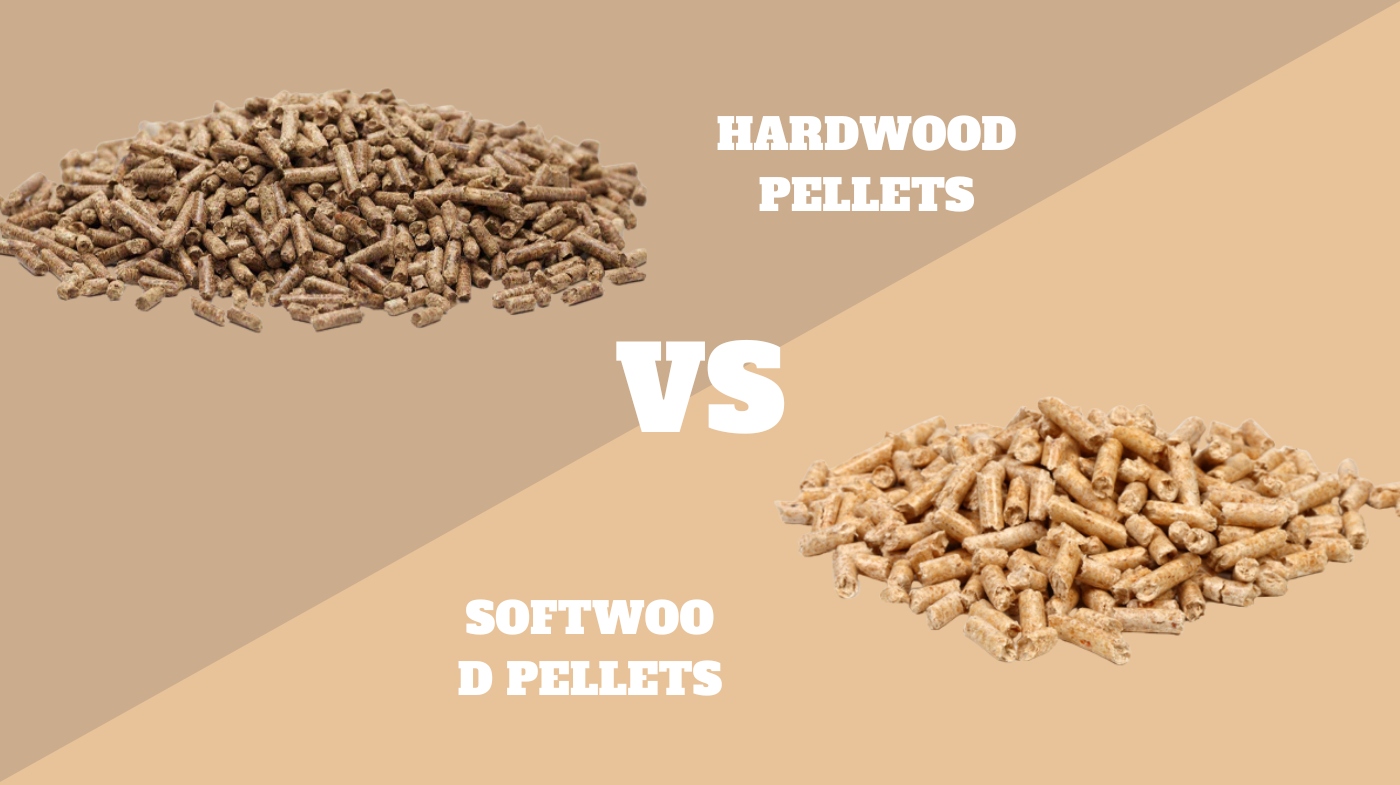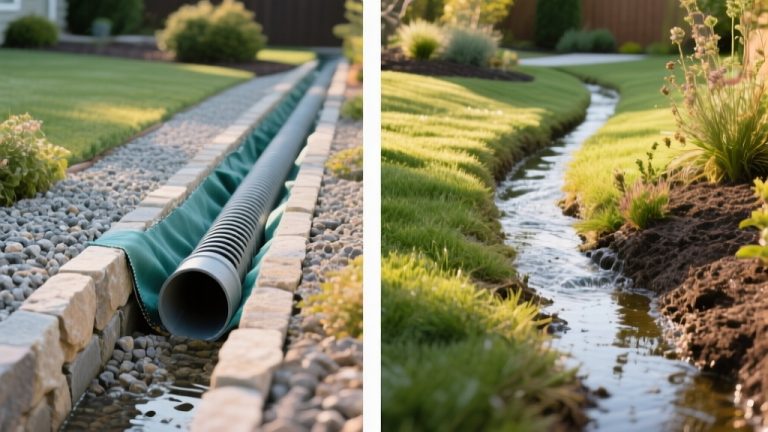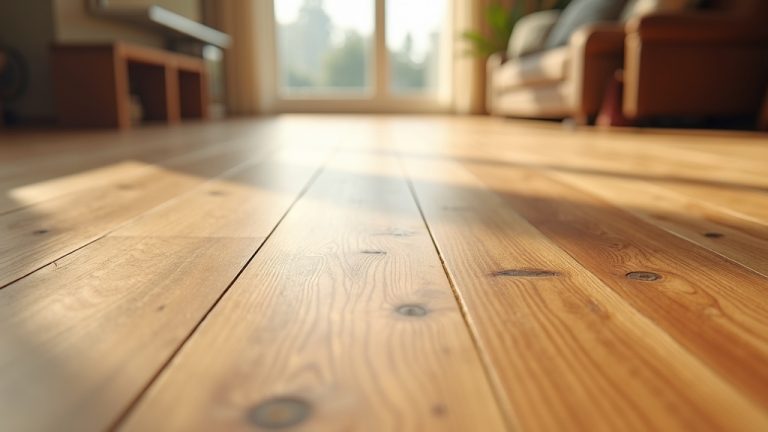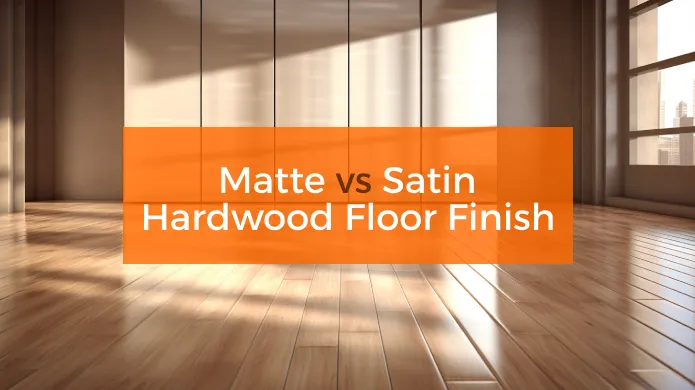Hardwood Pellets vs Softwood: the Right Pellet Choice
When choosing between hardwood and softwood pellets, consider that hardwood pellets burn slower and longer due to their dense fiber structure but produce more ash and clinker. Softwood pellets ignite faster, deliver 10-20% more heat per pound, and yield less ash thanks to higher resin content.
Hardwood suits steady residential heating with fewer refills, while softwood is ideal for rapid, intense heat workloads. Your choice impacts efficiency, maintenance, and environmental footprint. Explore further to optimize your fuel selection.
- Maple, Hickory, and Cherry Blend: Competition blend is the Jack of All Trades. It’s great with…
- No Oils, Chemicals, or Binders Added: No oils, chemicals or binders added mean better flavor and a…
- Kiln-Dried: The kiln dried process creates low moisture content for a very dry, hot burning pellet….
- 100% high-heat processed pine. Made for high ammonia animal environments, this bedding naturally…
- Can be used in horse stalls, chicken coops, rabbit hutches or cat litter boxes
- Fine texture to allow easy sifting, and super low dust content due to extensive dust extraction…
Key Takeaways
- Softwood pellets have higher resin content, ignite faster, and produce 10-20% more heat per pound than hardwood pellets.
- Hardwood pellets burn slower with steadier heat but generate more ash, requiring more frequent stove cleaning and maintenance.
- Hardwood pellets are denser and darker, while softwood pellets are lighter with a shinier, resin-rich surface, affecting combustion behavior.
- Softwood pellets have a lower carbon footprint due to faster tree growth and less energy-intensive processing compared to hardwood pellets.
- Hardwood pellets suit steady residential heating with longer burn times, whereas softwood pellets are ideal for quick, intense industrial heating.
Comparison Table Between Hardwood & Softwood Pellets
| Characteristic | Hardwood Pellets | Softwood Pellets |
|---|---|---|
| Burning Speed | Burn slower and longer due to dense fiber structure | Ignite faster |
| Heat Output | Standard heat output | Produce 10-20% more heat per pound |
| Ash Production | Produce more ash and clinker | Yield less ash |
| Resin Content | Lower resin content | Higher resin content |
| Fiber Structure | Dense fiber structure | Less dense structure |
| Best Use Case | Ideal for steady residential heating with fewer refills | Perfect for rapid, intense heat workloads |
| Refill Frequency | Fewer refills needed | More frequent refills required |
| Raw Material Source | Made from hardwood tree species | Made from softwood tree species |
| Manufacturing Process | Similar manufacturing processes to softwood | Similar manufacturing processes to hardwood |
Definition and Common Sources of Hardwood and Softwood Pellets
When you examine hardwood and softwood pellets, you’ll find they originate from distinct tree species and share similar manufacturing processes but differ in raw material properties.
Hardwood pellets come from dense species like oak and beech, while softwood pellets derive from lighter species such as pine and spruce. Treating wood pellets with fire retardant products can enhance safety during storage and use.
Hardwood and softwood pellets come from different tree species but undergo similar manufacturing processes.
Both types compress sawdust and wood fibers into cylindrical pellets, typically 6 to 8 mm in diameter. Hardwood raw material density tends to yield longer burn times and higher heat density. Softwoods (pine, fir, spruce) are preferred due to lower density and ease of pulverization.
Softwood feedstock, with lower density and higher resin content, compresses more easily and may produce greater heat per pound.
Both pellet types primarily use sawmill residues and pulpwood chips, favoring stem wood for combustion consistency. Production guarantees moisture below 8-10% and low ash content, optimizing fuel quality regardless of wood type.
Physical Characteristics and Appearance Differences
You’ll notice hardwood pellets are denser and darker, reflecting their compact fiber structure and lower resin content. This density also influences the durability and maintenance of the pellets during storage and use.
Softwood pellets, in contrast, weigh less and appear lighter with a slightly tackier surface due to higher resin levels. These physical traits directly influence handling, combustion efficiency, and ash production.
Additionally, hardwood pellets tend to produce more ash, which can affect maintenance frequency.
Density and Weight
Although both hardwood and softwood pellets undergo compression during manufacturing, hardwood pellets retain a higher density due to their compact fiber structure.
This results in greater mass per volume compared to the lighter, more porous softwood pellets. Maintaining appropriate moisture levels during pellet production is crucial to preserving this density and preventing damage.
This density difference means hardwood pellets are heavier per unit volume, delivering more fuel mass in the same storage or hopper space. You’ll notice that hardwood’s higher density translates to longer burn times and sustained heat output.
Conversely, softwood pellets, being less dense, weigh less and are easier to handle but provide less energy content by volume. Softwood pellets also have a higher calorific value, providing 10%-20% more heat than hardwood pellets.
Making hardwood pellets more efficient for prolonged use, while softwood pellets offer convenience in handling and quicker initial combustion. Proper humidity control during storage is essential to maintain pellet quality and prevent warping or degradation.
Color and Texture
Because hardwood and softwood pellets originate from distinct tree species, their color and texture exhibit notable differences that affect both appearance and perceived quality.
Hardwood pellets range from warm reddish-browns to dark walnut shades, reflecting species like Oak and Maple. In contrast, softwood pellets appear paler, often blonde-toned, consistent with Pine and Fir.
These color variations are normal due to the natural raw material differences in the wood species used. The drying times can also vary between hardwood and softwood pellets because of their porous wood characteristics.
Texture-wise, hardwood pellets are denser and harder with a matte finish, while softwood pellets feel softer, sometimes shinier due to resin content.
- Hardwood pellets show fine, tight grain patterns; softwoods display looser, resinous grain.
- Color variation within batches is common for both types.
- Dark pellets may indicate bark inclusion or torrefied wood.
- Both maintain uniform diameter but differ slightly in density and surface texture.
Resin and Composition
When comparing hardwood and softwood pellets, their resin content and physical composition markedly influence their combustion behavior and performance. Softwood pellets contain higher resin levels, derived from sap-rich species like pine, which boosts their energy content by 10-20% and enables faster ignition with a hotter, more volatile flame.
Hardwood pellets, composed of denser fibers from trees like oak, have lower resin but greater compactness. This results in slower ignition and prolonged, steady heat output. The lower density of softwood pellets facilitates better airflow, enhancing initial combustion efficiency.
In contrast, hardwood’s density promotes sustained burning and coal bed formation. Additionally, resin-rich softwood pellets produce less ash and fewer particulates, reducing maintenance.
In contrast, hardwood pellets generate more ash due to higher mineral content, demanding more frequent cleaning despite offering longer-lasting thermal performance. Proper maintenance, including removing sticky residue and regular cleaning, is essential to ensure optimal pellet stove performance and longevity.
Energy Content and Heat Output Comparison
If you prioritize immediate heat output, softwood pellets deliver 10%-20% more BTUs per pound than hardwood pellets, thanks to their higher resin content that enhances energy density and ignition speed. Softwood’s rapid combustion produces a consistent, efficient flame but burns faster.
However, softwood pellets generally produce more ash and clinkers, which can affect stove maintenance frequency ash production. Hardwood pellets, with their denser composition, generate around 8,000 BTUs per pound and burn slower, providing sustained heat over longer periods.
Consider these points when comparing energy content and heat output:
- Softwood pellets ignite quickly, yielding higher initial heat.
- Hardwood pellets create a hot coal bed, extending heat release duration.
- Softwood’s lower density supports efficient airflow, improving combustion.
- Hardwood pellets require longer warm-up but stabilize temperature for steady heating.
Ash Production and Emission Levels
Beyond energy output, ash production and emission levels play a significant role in evaluating hardwood versus softwood pellets. Hardwood pellets generate roughly three times more ash than softwood due to their higher mineral content, resulting in denser ash that complicates cleaning and maintenance.
Hardwood ash content is typically higher, often reflecting approximately three times higher ash compared to softwood pellets. You’ll find softwood pellets produce less ash because their higher resin content leads to cleaner combustion and lower particulate emissions.
This cleaner burn not only reduces stove fouling but also minimizes environmental impact, as softwood pellets emit fewer particulates and gases. Ensuring proper maintenance and regular cleaning is crucial to optimize pellet stove efficiency and minimize emissions.
While both pellet types outperform fossil fuels environmentally, softwood’s faster tree growth and energy density contribute to a smaller carbon footprint. When choosing pellets, consider these factors to optimize stove performance, maintenance intervals, and emission compliance.
Combustion Behavior and Burn Duration
Although hardwood and softwood pellets share the same purpose, their combustion behavior and burn duration differ considerably due to their distinct physical and chemical properties.
Hardwood pellets burn slower and produce a longer-lasting burn because of their dense composition and lower sap content, creating a bed of hot coals for sustained heat. This slower burn also reduces the need for frequent fuel feeding, similar to how vacuuming hardwood floors can be less frequent yet effective.
In contrast, softwood pellets ignite quickly and burn faster due to higher resin, releasing heat rapidly but over a shorter period. Softwood pellets are also known for their lower ash content, which leads to cleaner burning and less residue.
- Hardwood pellets offer steady, prolonged heat with slower ignition and longer burn times.
- Softwood pellets provide rapid flame and higher initial heat output.
- Softwood’s higher resin content yields 10-20% greater calorific value per pound.
- Hardwood pellets reduce fuel feeding frequency due to extended combustion duration.
Impact on Stove and Heating Appliance Performance
You’ll notice softwood pellets typically deliver higher heat output and improved combustion efficiency, which can enhance stove performance. However, this may also increase maintenance due to hotter burn conditions.
Pellet fuels generally have a low moisture content of 5%-8%, which contributes to their efficient and cleaner burning characteristics. Regular cleaning is essential to maintain stove efficiency and prevent damage from ash buildup.
Hardwood pellets generate more ash, requiring more frequent cleaning. This can potentially affect air pathways within your appliance. Understanding these differences helps you optimize heat output while managing ash handling to maintain appliance efficiency.
Combustion Efficiency Differences
How does the type of pellet you choose affect your stove’s combustion efficiency and overall performance?
Hardwood pellets, with lower moisture content (usually below 10%), enable a more efficient burn by minimizing energy lost to water evaporation. This results in a stable, consistent flame that optimizes thermal efficiency and reduces emissions.
Additionally, hardwood pellets are known for their longer burn time, which can contribute to more sustained heating periods. It is also important to ensure good air circulation around the stove to maintain optimal combustion conditions.
Conversely, softwood pellets have slightly higher moisture, which can decrease combustion efficiency and increase creosote buildup, affecting maintenance frequency.
Ash production also influences performance: hardwood pellets produce more ash, potentially causing clinker formation and airflow restriction, while softwood pellets yield less ash, supporting cleaner combustion and longer appliance lifespan.
- Hardwood’s low moisture content promotes steady combustion and lower emissions
- Softwood’s higher moisture may reduce efficiency and increase maintenance
- Ash from hardwood can impair airflow and require frequent cleaning
- Softwood’s lower ash content enhances appliance durability and cleanliness
Heat Output Variations
What differentiates hardwood pellets from softwood pellets regarding heat output? Softwood pellets deliver 10%–20% higher BTUs per pound, around 8,700 BTUs compared to hardwood’s 8,000, due to higher resin content enhancing combustion intensity.
This results in faster heat ramp-up but requires stove airflow adjustments to guarantee complete combustion and ideal burn management. The manufacturing process compresses wood at extreme heat and pressure, removing sap and moisture to create pellets with high density and consistent burn performance.
Hardwood pellets burn steadier and longer, promoting consistent stove temperatures with reduced fluctuations. Both pellet types maintain densities that enable predictable stove feeding and combustion efficiencies above 80%, maximizing energy conversion.
Proper care and maintenance, such as regular cleaning to reduce ash buildup, help preserve stove performance and prolong appliance life. Softwood’s intense flames produce less clinker and ash, reducing maintenance and wear, whereas hardwood’s increased ash may necessitate more frequent cleaning.
Ultimately, your choice impacts stove performance—softwood suits rapid heating needs, while hardwood supports sustained warmth with stable appliance operation. Always ensure to follow routine maintenance guidelines to maintain optimal heating efficiency and protect your stove’s finish.
Maintenance and Ash Handling
While softwood pellets offer higher heat output and faster combustion, their impact on stove maintenance and ash handling differs markedly from hardwood pellets.
Hardwood pellets generate roughly three times more ash, increasing cleaning frequency and clinker formation risks, which can damage burn pots and reduce airflow. This accelerates wear on components like grates and ash pans, demanding larger ash containers or more frequent emptying.
The higher ash content also impacts environmental considerations and stove maintenance, making hardwood pellets less favorable for long winter heating periods. Conversely, softwood pellets’ lower ash content lessens maintenance labor and downtime but may produce more sparks, affecting spark arrestors.
- Hardwood pellets require frequent ash removal to maintain ideal combustion efficiency.
- Excess ash from hardwood pellets can insulate heat exchange surfaces, impairing performance.
- Softwood pellets enable longer intervals between cleanings, benefiting operational efficiency.
- Pellet stoves optimized for softwood may need adjustments when switching to hardwood pellets.
Market Availability and Pricing Factors
Because pellet availability varies regionally, understanding market dynamics for hardwood and softwood pellets requires analyzing both supply sources and pricing influences. Hardwood pellets dominate in Ireland and parts of Europe but depend on imports, which affect their price and quality.
Hardwood pellets prevail in Ireland and Europe, relying on imports that influence cost and quality.
Softwood pellets generally enjoy higher availability due to abundant local sources, lowering costs through reduced transportation. Once processed, softwood pellets tend to produce more heat and less ash than hardwood.
Pricing reflects raw material density and energy content: hardwood pellets carry higher production expenses, whereas softwood pellets benefit from cheaper wood and resin content.
However, premium pricing applies to softwood varieties like Douglas fir in certain U.S. regions due to their efficiency. Bulk purchasing and contracts help stabilize prices amid supply fluctuations.
Environmental Considerations and Emission Profiles
Regional availability and pricing of hardwood and softwood pellets directly influence their environmental impact and emission characteristics. Softwood pellets typically have a lower carbon footprint due to faster-growing species and less energy-intensive processing.
Hardwood pellets require more drying and compression energy, raising emissions during production. Moreover, the faster growth of coniferous trees allows for more rapid carbon absorption, mitigating overall environmental impact.
Combustion emissions differ: softwood pellets burn cleaner with less ash and particulates, improving air quality, while hardwood pellets produce more ash and fine particulates.
Key points to regard:
- Softwood pellets’ faster growth cycles reduce carbon deficits.
- Hardwood pellets risk ecological damage if sourced unsustainably.
- Softwood combustion yields fewer airborne pollutants and particulate matter.
- Certification standards like ENplus ensure cleaner-burning, sustainable pellets.
Suitability for Various Heating Applications
You’ll find that hardwood pellets, with their longer burn times and lower ash content, maximize residential heating efficiency by reducing maintenance and extending operation cycles.
Choosing pellets with less than 1% ash content ensures optimal stove performance and minimizes cleaning frequency. Softwood pellets, offering higher heat output and rapid ignition, suit industrial fuel applications where consistent, intense energy generation is critical.
Evaluating pellet characteristics against your heating system’s specifications guarantees ideal performance and cost-effectiveness in both settings.
Residential Heating Efficiency
When selecting pellets for residential heating, understanding their burn characteristics and heat output is essential to match your system’s requirements. Hardwood pellets deliver consistent, prolonged heat with about 8,000 BTUs per pound, ideal for sustained warmth in colder climates.
Softwood pellets offer 10%-20% higher BTUs and ignite quickly, providing rapid heat suited for fast-cycling stoves. Their higher heat output ensures more efficient heating and reduced fuel consumption. Your choice impacts fuel efficiency, maintenance, and overall heating performance.
- Hardwood pellets burn longer due to higher density, reducing refill frequency.
- Softwood pellets produce less ash, lowering cleaning demands.
- Softwood’s higher energy density means fewer pellets needed for the same heat output.
- Hardwood pellets generate steadier heat with minimal clinker formation, enhancing stove longevity.
Industrial Fuel Performance
Although hardwood and softwood pellets differ in burn characteristics, both deliver combustion efficiencies exceeding 80%, making them highly suitable for various industrial heating applications such as boilers and power generation.
Softwood pellets offer 10%-20% higher BTU output due to greater sap content and lower density, promoting enhanced airflow and cleaner combustion with less clinker formation.
Hardwood pellets burn longer owing to higher density and lower moisture but generate approximately three times more ash, necessitating more frequent maintenance and robust ash handling systems. Their higher calorific value makes them ideal for high-heat industrial processes requiring sustained energy output.
Both pellet types maintain low emissions compared to coal, yet softwood’s faster growth supports sustainable supply chains. Economic factors favor softwood pellets for cost-effective large-scale heating.
Factors to Consider When Choosing Pellet Type
Since selecting the right pellet type directly affects heating efficiency and maintenance, you need to weigh factors like energy content, burn characteristics, ash production, cost, and environmental impact carefully.
Softwood pellets offer 10%-20% higher calorific value and faster ignition due to resin content, while hardwood pellets burn longer with steady heat and less odor.
Softwood pellets ignite quickly with higher energy, while hardwood pellets provide longer, steady heat and reduced odor.
Ash production varies, with hardwood generating more residue, affecting cleaning intervals. Cost and availability also differ, as hardwood pellets tend to be pricier and marketed as premium fuel. Consider these factors when choosing pellets:
- Energy density vs. burn duration needs
- Ash production and stove maintenance frequency
- Price constraints and local pellet availability
- Environmental effects like smoke and odor emission
Additionally, ensuring pellets are ENplus A1 certified guarantees no fillers or artificial binders and supports sustainable sourcing.
Frequently Asked Questions
Can Hardwood and Softwood Pellets Be Mixed for Burning?
Yes, you can mix hardwood and softwood pellets for burning without risking damage or efficiency loss. Pellet manufacturing standardizes size and compression, so the blend maintains consistent density and BTU output.
Mixing combines hardwood’s longer burn time with softwood’s hotter flame, optimizing heat characteristics. Just keep in mind that ash production and maintenance frequency might vary depending on the hardwood-to-softwood ratio in your mix.
How Do Pellet Moisture Levels Affect Burning Efficiency?
Imagine lighting a fire with soaked kindling—it sputters and smokes. Similarly, pellet moisture levels critically impact burning efficiency. When moisture stays between 5–10%, pellets combust cleanly, deliver consistent heat, and minimize emissions.
Higher moisture forces energy to evaporate water, reducing heat output, causing clogs, and increasing harmful byproducts. You need to keep pellets dry and monitor moisture meticulously to guarantee ideal combustion and prolong your stove’s life.
Are There Health Risks From Handling Hardwood vs Softwood Pellets?
You face health risks handling wood pellets due to dust inhalation and skin contact, which can cause respiratory irritation and dermatitis. Softwood pellets contain higher monoterpene levels, increasing skin and respiratory irritation risks compared to hardwood.
Both pellet types emit volatile organic compounds and carbon monoxide during storage, posing toxic hazards. Use dust control, ventilation, CO detectors, and personal protective equipment to minimize exposure and safeguard your respiratory and skin health effectively.
Do Hardwood or Softwood Pellets Require Different Storage Conditions?
Storing pellets safely requires sturdy, stable settings. You’ll want to keep them dry and cool to curb carbon monoxide and volatile compound emissions.
Both pellet types demand dehumidified, ventilated environments to minimize moisture-induced deterioration and off-gassing. While softwood pellets tend to emit higher pollutants, their storage conditions don’t drastically differ from hardwood.
What Maintenance Differences Exist for Stoves Using Hardwood or Softwood Pellets?
You’ll need to adjust your maintenance routine based on pellet ash content and burn characteristics. Pellets with higher ash require more frequent ash removal and stove cleaning to prevent clinker buildup and blockages.
Lower ash pellets reduce cleaning frequency but may cause faster wear on heat-exposed parts due to higher temperatures. Regardless, consistent inspection, ash removal, and professional servicing remain essential to maintain efficiency and prolong your stove’s lifespan.
Eco Impact Matters: Consider the Environmental Trade-Offs for Floors
When choosing between hardwood and softwood pellets, you’re steering a landscape where energy density meets burn efficiency like two sides of a finely balanced scale. Hardwood pellets, dense and long-lasting, burn like a slow-burning ember, while softwood offers a quicker, lighter flame.
Consider your heating needs, emissions tolerance, and cost constraints carefully—they’re the compass guiding your choice through this nuanced terrain. Your decision shapes not just warmth, but the very footprint you leave behind.
- This versatile flavor goes with everything
- Free of artificial flavors, spray scents, glues, or chemicals
- Crafted with all-natural 100% North American hardwood
- Use on just about any kind of animal or reptile
- Master Pack 50Specifications
- Capacity: 40 lbs
Last update on 2025-12-24 / Affiliate links / Images from Amazon Product Advertising API











